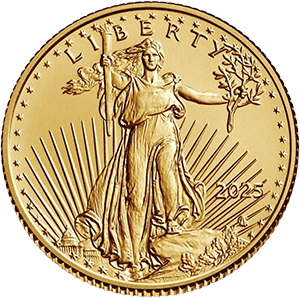Which is a better purchase? Buying gold coins or buying gold bars?
Precious metals have been one of the top performing asset classes over the past decade. Investors wanting to add a precious metals component to their portfolio are often overwhelmed by the number of investment vehicles available to them today. Alternatives include precious metals futures and options contracts, government certificates, “digital gold,” exchange traded funds (ETFs), mutual funds, mining shares, as well as buying the physical bullion itself. All enable an investor to gain exposure to the precious metals markets and participate in what many investment experts foresee as a continuing multi-year secular market.
Having exposure to gold, in particular, the world’s pre-eminent tangible asset, either through a direct purchase of the physical asset itself, or by adding one of the other aforementioned alternative vehicles, is highly recommended in today’s environment.
But to be sure, there is no "holy grail" of gold investing; it should never be an "either / or" scenario. Just as prudent investors hold a range of investment types to minimize their dependence on a single asset class in their overall portfolios, investors should also consider further diversifying their holdings by acquiring a number of these precious metals vehicles within this particular component of their portfolios.
Ultimately, the crux of the answer as to which to buy rests with the investment objectives and risk tolerance of the investor. Indeed, there is no single, correct answer for every investor, and seeking the assistance of a reputable, trusted investment expert is the best approach for most investors when contemplating making a gold or other precious metals investment.
Bullion coins are highly refined precious metal products that are round in shape (as opposed the rectangular shape of a bullion bar), and produced to exacting specifications by numerous federal governments throughout the world, specifically for investment purposes. These coins are produced in large quantities and come in a variety of sizes, which are convenient to own and trade -- typically one, one-half, one-quarter, and one-tenth troy ounces. Their content – is the weight and purity of precious metal they contain -- is guaranteed by the governments that produce them.
The United States Mint describes a bullion coin as: "a coin that is valued by its weight in a specific precious metal. Unlike commemorative or numismatic coins valued by limited mintage, rarity, condition and age, bullion coins are purchased by investors seeking a simple and tangible means to own and invest in the gold, silver, and platinum markets."
Bullion bars, on the other hand, are rectangular blocks of investment grade precious metal (also referred to as "ingots") manufactured by commercial refiners. (Note: the most reputable and prominent commercial refiners have standing with, and are recognized by the world’s leading precious metals exchanges.) Bullion bars are produced in a wide range of sizes – from 1 gram (or less) to 400 troy ounces (or more). They typically bear four distinguishing marks that uniquely identify them, including their refiner’s mark (i.e., the bar’s brand name), the gross weight (usually in troy ounces), the metal fineness (or "purity"), and the bar’s serial number.
Having been produced commercially, they have no legal tender status, but reputable refiners stand behind the quality and authenticity of the bars that bear their brand name. Both small and large sized bars are also highly liquid and easily traded worldwide, provided the larger bars are not held by the investor personally (more about this point appears below). And, like bullion coins, the price of these bars varies with the market value of the precious metals they contain, plus a modest premium representing the cost of production, shipping, handling and the seller’s profit.
There are, in reality, three important aspects for an investor to consider when choosing between bullion coins or bullion bars for investment. Each of these aspects can affect the cost of the investment and affect the flexibility the investor has over his/her investment.
These considerations include the following:
- Premium – as discussed above, this refers to amount of money an investor is charged for the product over and above the value of the metal the coin or bar actually contains.
- Custody – An investor may desire to hold his/her bullion coins or bars close at hand and, therefore, may request personal delivery. This is fine for bullion coins and small investment bars, as neither will typically require assay (unless they are materially damaged) at the time they are ultimately sold. But, because the content of large bars can be manipulated or altered in ways that are difficult to detect by visual examination, even by seasoned professionals, a time-consuming and costly assay will be required if the investor has taken personal possession of them and presents them to a dealer for sale.
- Flexibility – Is this a long-term investment that may be a permanent part of one’s estate that will be passed on to a number of heirs? If this is the case, then buying bullion coins may be preferred.
To summarize, an investor should carefully consider his or her investment objectives, the amount of money he or she plans to invest, their need for liquidity, and the current geopolitical, macroeconomic and systemic risk when making an investment in precious metals.
And while the variety of bullion products may seem somewhat overwhelming, the "best" product, in all likelihood, will differ for each investor.
Consultation with a trusted precious metals advisor can help you determine the best precious metals products to satisfy your individual risk tolerance and specific investment objectives.
Remember - "take care of your money and your money will take care of you."
Call or email us today if we can help. We stand ready to serve you.

